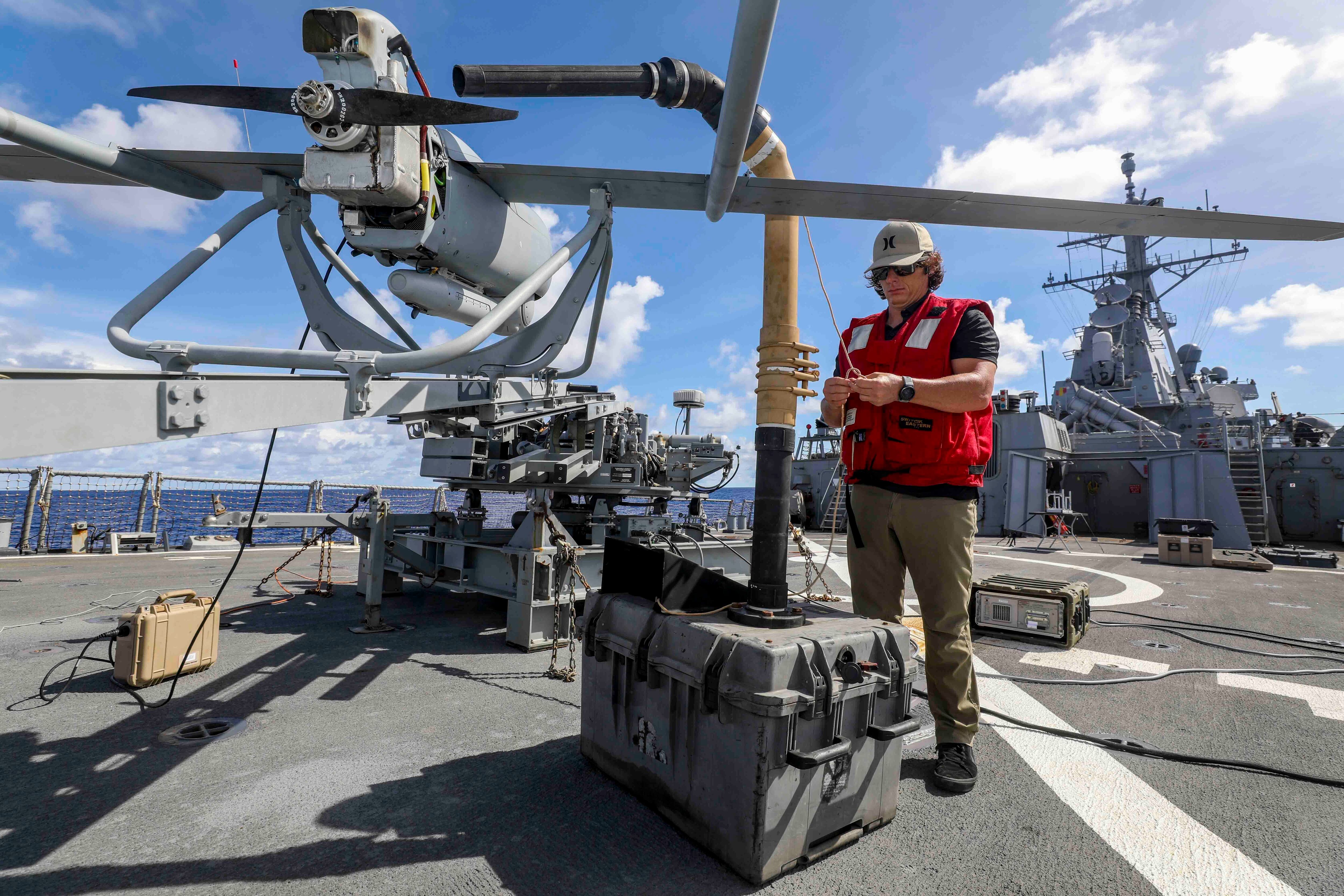LONDON — Textron Systems is demonstrating new uses for its Aerosonde Small Unmanned Aircraft System, even as it courts potential European customers who have seen the drone in action during recent international maritime operations.
Textron currently flies its small UAS off four U.S. Navy ships: two destroyers the company cannot disclose, and the expeditionary sea bases Hershel “Woody” Williams and Miguel Keith. These operations fall under a contractor-owned/contractor-operated model, where Textron employees embark on the ship to operate the drones, and the Navy essentially buys the data these drones collect.
Last month, the Navy also awarded a contract to operate the drone from two Independence-variant littoral combat ships and one Freedom-variant LCS under this CO/CO model.
Wayne Prender, Textron’s senior vice president of air systems, told Defense News the LCS operations would provide a chance to pair the Aerosonde unmanned aerial system with the Common Unmanned Surface Vessel that Textron designed as part of the LCS mine countermeasures mission package.
Later this year, the service will demonstrate this unmanned-unmanned teaming by having the Aerosonde drone provide data-relay, targeting, threat identification and other support functions for a USV in the water.
In addition to this demonstration, Prender said Textron would integrate Aerosonde onto the three LCSs by the end of the year so the ships can start operations overseas using the drone.

During this week’s DSEI European defense conference here, Prender said the company hopes to get closer to signing contracts with a number of European navies, a sales pitch made easier due to these navies’ previous first-hand experience with the Aerosonde drones operating off American ships.
Through these operations — particularly with the Souda Bay-based Hershel Williams — regional navies are getting a look the Aerosonde’s intelligence, surveillance and other capabilities.
Prender referenced an April 2022 Hershel Williams mission where the ship helped seize a large amount of cocaine in conjunction with Cabo Verde maritime forces. “So while in support of a U.S. military operation, it was done in conjunction with allied countries right there in the Africa/European space,” he said.
And in the Pacific, Prender said the Spanish Navy has worked with the Saipan-based Miguel Keith during joint operations.
He declined to name which countries Textron would be talking to at DSEI.
Bulgaria bought the Aerosonde system in 2017 to operate itself, and Textron has partnered with Nordic Unmanned to operate the drones in support of the European Maritime Safety Agency. Through this work, the drones have operated off Royal Danish Navy ships to identify and verify potential oil spills, to confirm the identities of ships during safety patrols and to conduct search and rescue missions.
Prender said Textron has also operated its drone in Australia, including a recent trial to use Aerosonde to fly through natural parks and conduct wildlife surveys and species identification.
Megan Eckstein is the naval warfare reporter at Defense News. She has covered military news since 2009, with a focus on U.S. Navy and Marine Corps operations, acquisition programs and budgets. She has reported from four geographic fleets and is happiest when she’s filing stories from a ship. Megan is a University of Maryland alumna.








